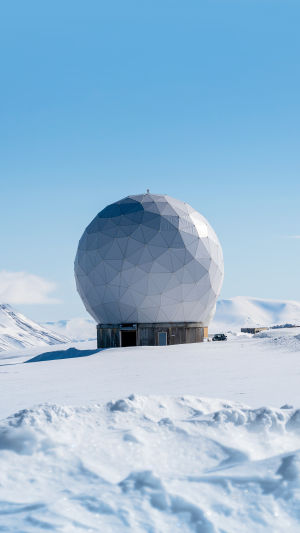Located on the archipelago of Svalbard in Norway, this remote station is the world’s northernmost satellite ground station and plays a crucial role in global communication, Earth observation, and scientific research.
But there's more to this facility than just satellites – it’s a gateway to one of the planet’s most mysterious and captivating regions!
<h3>Why Visit Svalbard Satellite Station?</h3>
Situated about 1,200 kilometers from the North Pole, SvalSat offers a unique opportunity for travelers to explore a technological marvel in one of the most extreme environments on Earth. Opened in 1997, this station consists of more than 100 satellite antennas, including some of the largest in the world, all positioned to harness the unique vantage point offered by the high latitude of Svalbard.
<h3>Experience the Thrill of the Arctic Circle</h3>
Visiting SvalSat isn’t just about technology – it’s an adventure. As you journey to this extraordinary location, you'll pass through Longyearbyen, the northernmost town on the planet, known for its dramatic landscapes, polar bears, and the Midnight Sun or Polar Night, depending on the season.
<h3>How to Reach Svalbard Satellite Station</h3>
<b>Getting There</b>: To reach Svalbard, you’ll need to fly into Longyearbyen Airport (LYR) from major Norwegian cities like Oslo or Tromsø. From there, local tours can be arranged to visit the Svalbard Satellite Station.
<b>Flight Cost</b>: Round-trip flights from Oslo to Longyearbyen typically range between $300 and $600 USD, depending on the season.
<b>Tour Costs</b>: Guided tours to SvalSat are available from Longyearbyen, with prices ranging from $100 to $200 USD per person, depending on the group size and duration.
<h3>What to Expect on Your Visit</h3>
<b>Guided Tours</b>: Tours to SvalSat usually include a guided introduction to the station’s operations, its history, and its vital role in global satellite communications. You’ll learn about the station’s collaboration with space agencies like NASA and ESA, and the work it does to support Earth observation, climate monitoring, and data collection from polar orbiting satellites.
<b>Scenic Beauty</b>: Beyond the technological intrigue, the station is set against the stunning backdrop of Svalbard’s Arctic wilderness. Expect to see vast glaciers, snow-capped mountains, and, if you’re lucky, wildlife like Arctic foxes or reindeer.
<h3>Dining Options Nearby</h3>
While the Svalbard Satellite Station itself does not have dining facilities, you’ll find several great dining options in Longyearbyen:
<b>Restaurant Nansen</b>: Located within the Radisson Blu Polar Hotel, this restaurant offers gourmet Nordic cuisine with stunning views of the Arctic landscape. Perfect for a meal before or after your tour.<b>Price Range</b>: $30 to $60 USD per person.
<b>Kroa Svalbard</b>: A cozy, rustic eatery in the heart of Longyearbyen known for its hearty dishes and local flavors. Ideal for a relaxed dining. <b>Price Range</b>: $20 to $40 USD per person.
<h3>Accommodation Near Svalbard Satellite Station</h3>
Stay in Longyearbyen, where you can find a range of accommodations to suit different budgets:
<b>Mary-Ann’s Polarrigg</b>: A unique lodging experience in converted miner’s barracks, offering a quirky and authentic stay with a warm atmosphere.
<b>Price Range</b>: $80 to $150 USD per night.
<b>Svalbard Hotel | The Vault</b>: A more budget-friendly option with cozy rooms, a central location, and excellent service.<b>Price Range</b>: $100 to $180 USD per night.
A visit to the Svalbard Satellite Station is more than just a journey to the world’s northernmost satellite hub; it’s an adventure into the heart of the Arctic. So Lykkers! If you’re a science enthusiast, a nature lover, or simply seeking a unique travel experience, SvalSat and its surrounding landscapes promise a memorable trip.





